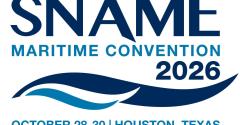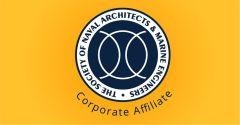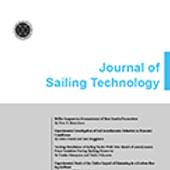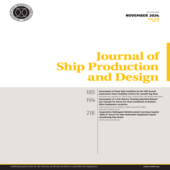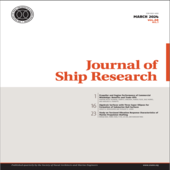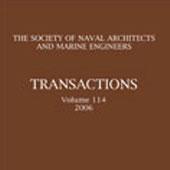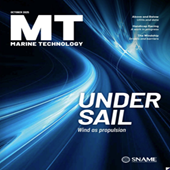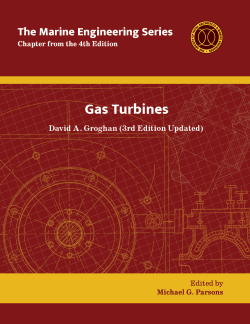
THE MARINE ENGINEERING SERIES (2025)

Gas Turbines
David A. Groghan (3rd Edition Update)
Gas Turbines is a newly updated chapter drawing from Chapter 4 of the 1992 Harrington 3rd edition. The marine engineering associated with gas turbines is well established, and they continue to play a central role in naval propulsion and auxiliary power. This chapter covers gas turbine fundamentals and performance, including single- and multi-spool designs, installation and maintenance, and key system components. It highlights advances in control systems, compressor and turbine design, combustion and lubrication, and the application of marine gas turbines in today’s ships.
ISBN 978-0-9996362-4-4
Soft Cover ♦ 1 lb
List: $45.00
Members: $35.00
Student Members: $25.00
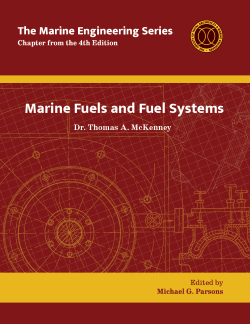
Marine Fuels and Fuel Systems
Dr. Thomas A. McKenney
Marine Fuels and Fuel Systems builds on coverage from Chapter 12 of the 3rd Edition. This new version reflects decades of development in fuel chemistry, environmental regulation, and system design. It provides a comprehensive review of fuels and fuel-handling systems that are essential to safe and efficient vessel operations. It blends the foundations of earlier editions with updates on today’s technologies.
ISBN 978-0-9996362-3-7
Soft Cover ♦ 1 lb
List: $45.00
Members: $35.00
Student Members: $25.00
THE MARINE ENGINEERING SERIES (2024)
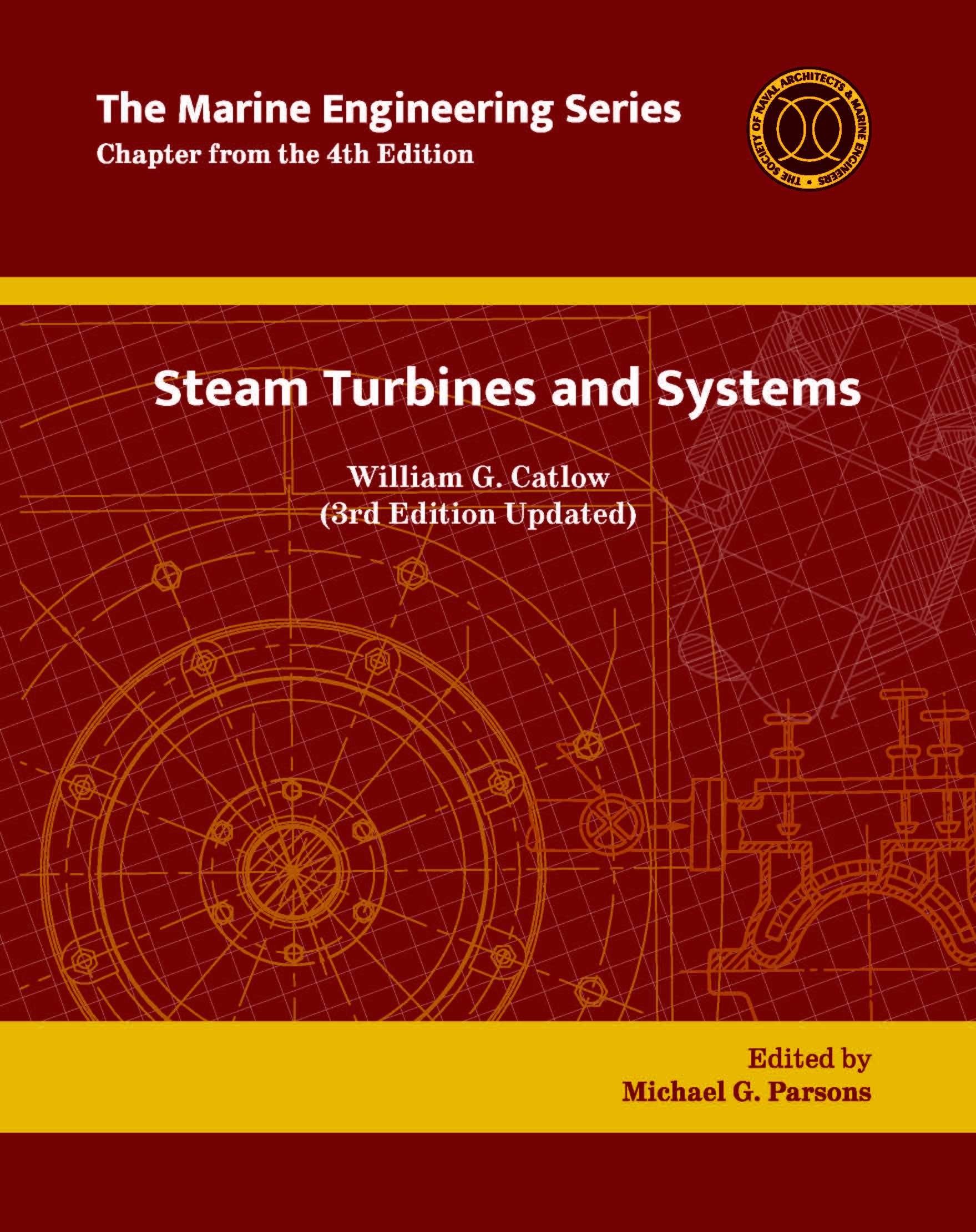
Steam Turbines and Systems
William G. Catlow (3rd Edition Update)
This chapter is a modest update and extension of the successful chapter “Steam Turbines” included originally in the 2nd Edition (1971) by William I. H. Budd and then revised for the 3rd Edition (1992) by William G. Catlow. These authors continue to deserve credit for the majority of the chapter. The chapter is presented again under William G. Catlow’s name. The modest extension by the Editor, with the assistance of Prof. Jose Femenia, focuses more on recent total steam systems, thus the title change. The extension presents more recent developments including the most advanced marine reheat cycle steam systems utilized in some LNG carriers, the use of multi-pressure turbines in advanced bottoming cycle waste heat removal systems, and the recent introduction of Organic Rankine Cycles (ORC) for low temperature waste heat removal from diesel cooling systems.
ISBN 979-8-3507-0683
Soft Cover ♦ 1 lb
List: $45.00
Members: $35.00
Student Members: $25.00
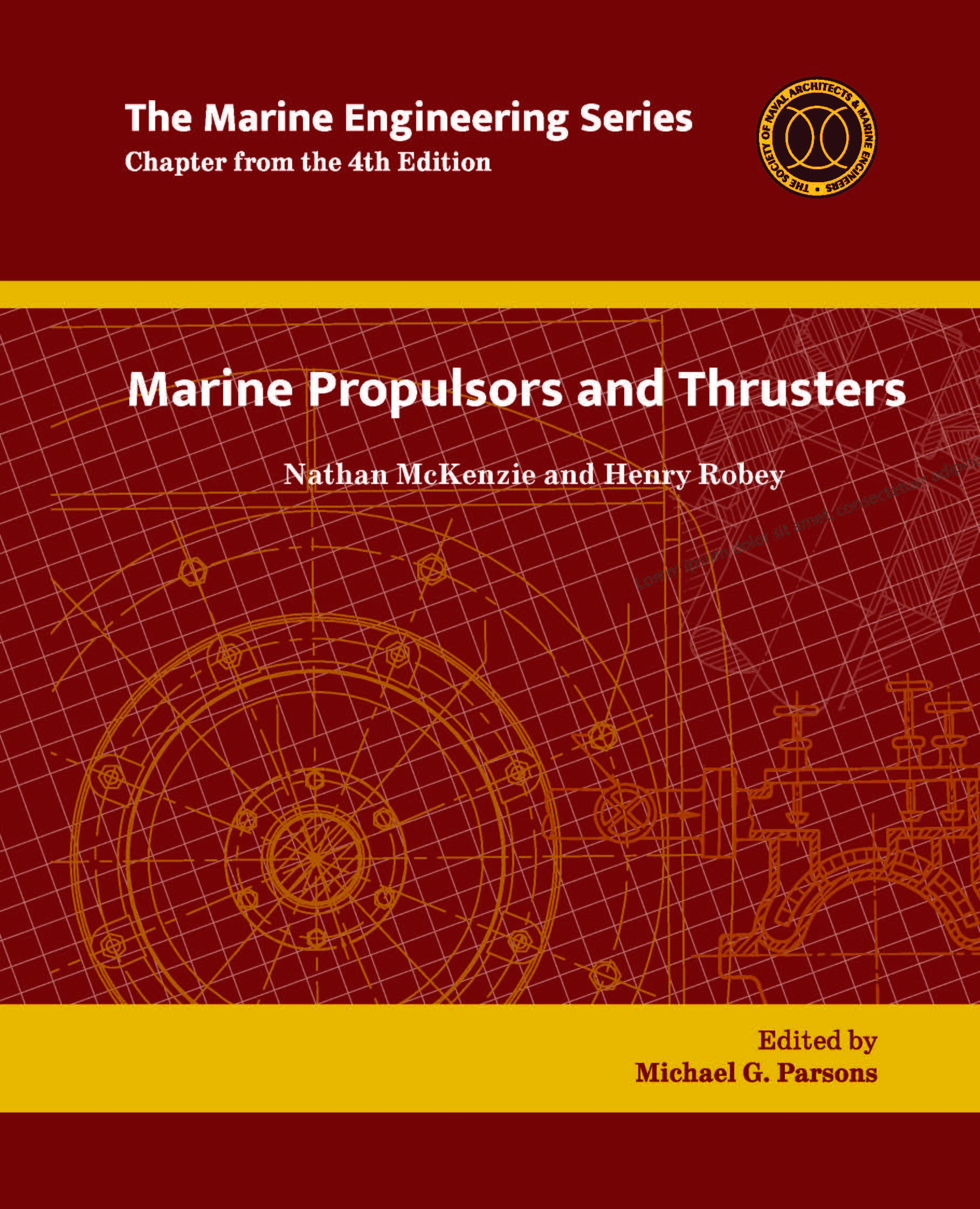
Marine Propulsors and Thrusters
Nathan McKenzie and Henry Robey
This completely new chapter, Marine Propulsors and Thrusters, introduces the principal types of marine propulsors with emphasis on the most common shaft-driven propeller design. The authors are experienced design/development marine engineers primarily with a naval background. This chapter coordinates with the series chapter Shafting, Bearings and Lubrication by Kevin Prince of Gibbs and Cox. The chapter also introduces marine thrusters including both azimuthing and fixed podded propulsors and lateral thrusters.
ISBN 979-8-3507-0682-6
Soft Cover ♦ 1 lb
List: $45.00
Members: $35.00
Student Members: $25.00
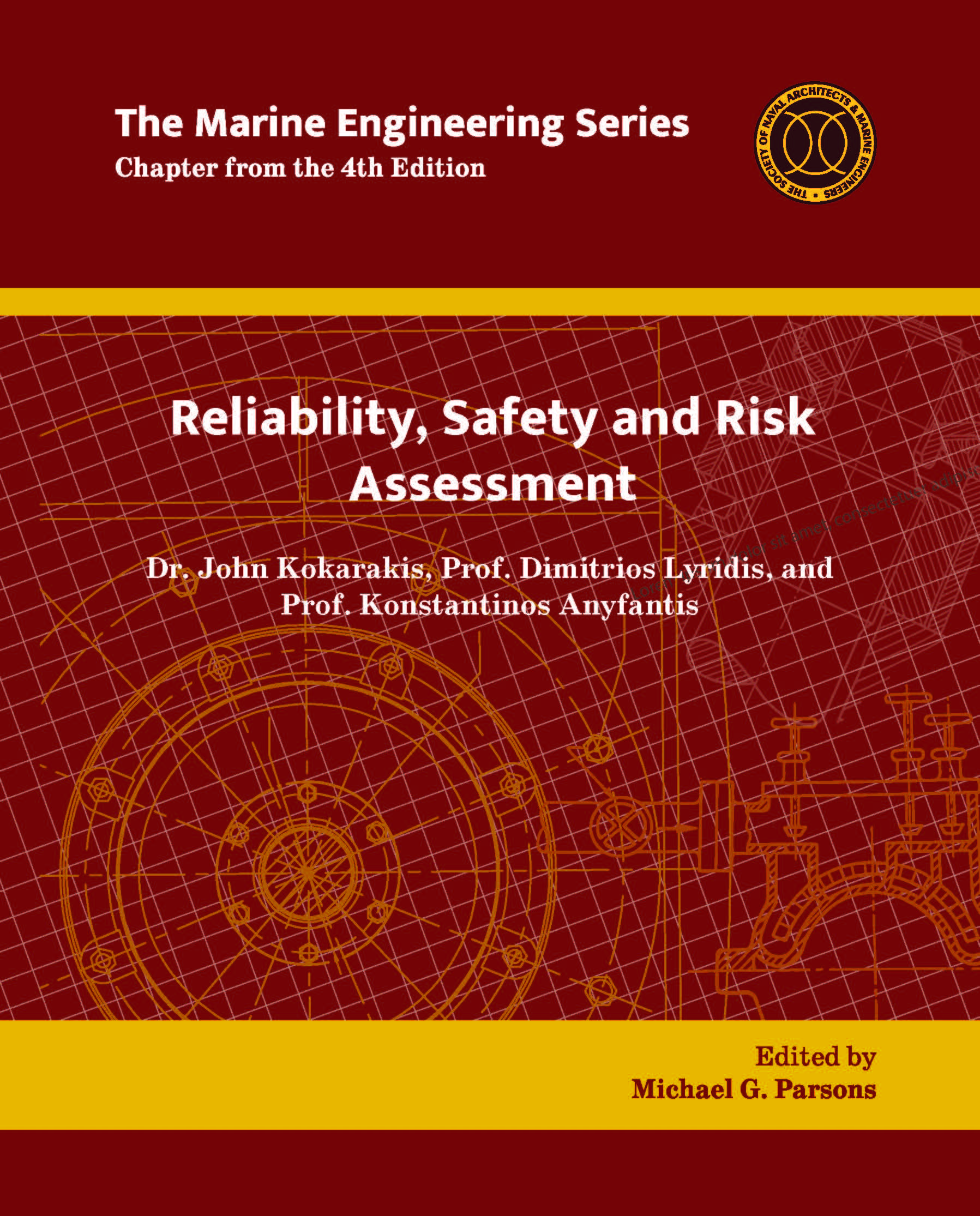
Reliability, Safety and Risk Assessment
Dr. John Kokarakis, Prof. Dimitrios Lyridis, and Prof. Konstantinos Anyfantis
This is a completely new chapter that deals with Reliability and Risk Assessment, two closely related topics that are built on the use of probability considerations and analysis. The maritime field is in a period of rapid technological change where concepts and projects are often moving in advance of the development of technical standards. In these cases, proof of concept and implementation must be accepted on the basis of showing equivalent risk to current projects. Its authors, Dr. John Kokarakis of Bureau Veritas and Profs. Dimitios Lyridis and Konstantinos Anyfantis of the National Technical University of Athens (NTUA), are members of the Greek Section of the Society. The Society is pleased to be able to include their contribution in this 4th Edition of Marine Engineering.
ISBN 979-8-3507-0680-2
Soft Cover ♦ 1 lb
List: $45.00
Members: $35.00
Student Members: $25.00
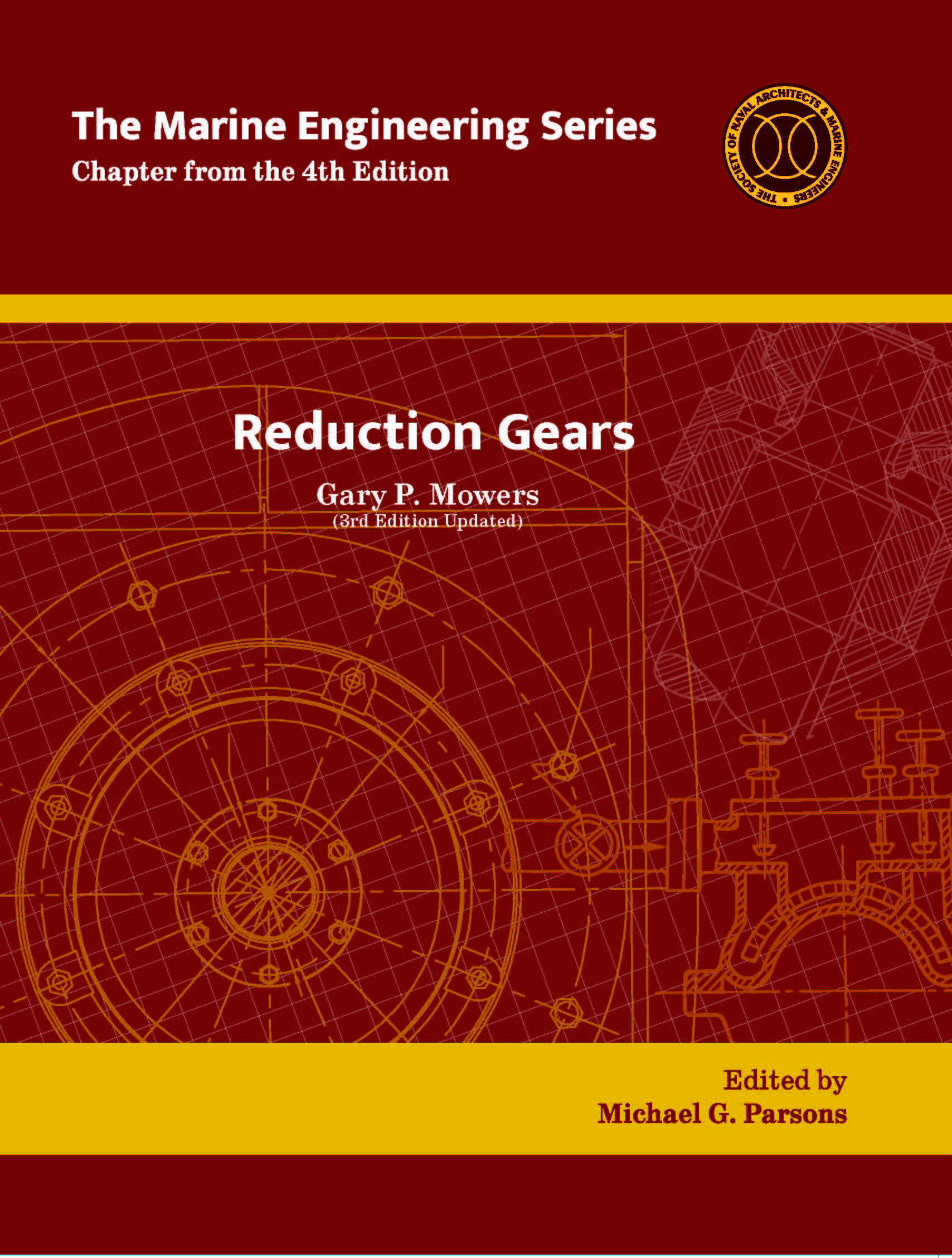
Reduction Gears
Gary P. Mowers (3rd Edition Update)
The newly revised edition of this material contains significant improvements and updates. The development of propulsion gearing has been one of continuous improvement and refinement in materials and in manufacturing techniques and equipment to provide greater reliability and longer life. The power ratings of gears have increased to keep pace with the requirements for larger and faster ships. There are only a few step-advances that can be identified, the step from single to double reduction, the introduction of welding to the construction of gear wheels and casings, the introduction of higher hardness pinion and gear materials with the attendant higher gear tooth loadings, and the subsequent refinement of surface hardening methods (carburizing and nitriding) as an alternative to through-hardening gear teeth. The reliability, high efficiency, and long life of the modern reduction gear are well known, and its low noise level makes it completely acceptable in the engine room. These factors have been in large part responsible for the continuing popularity of the geared-turbine drive for ships.
ISBN 979-8-3507-0681-9
Soft Cover ♦ 1 lb
List: $45.00
Members: $35.00
Student Members: $25.00
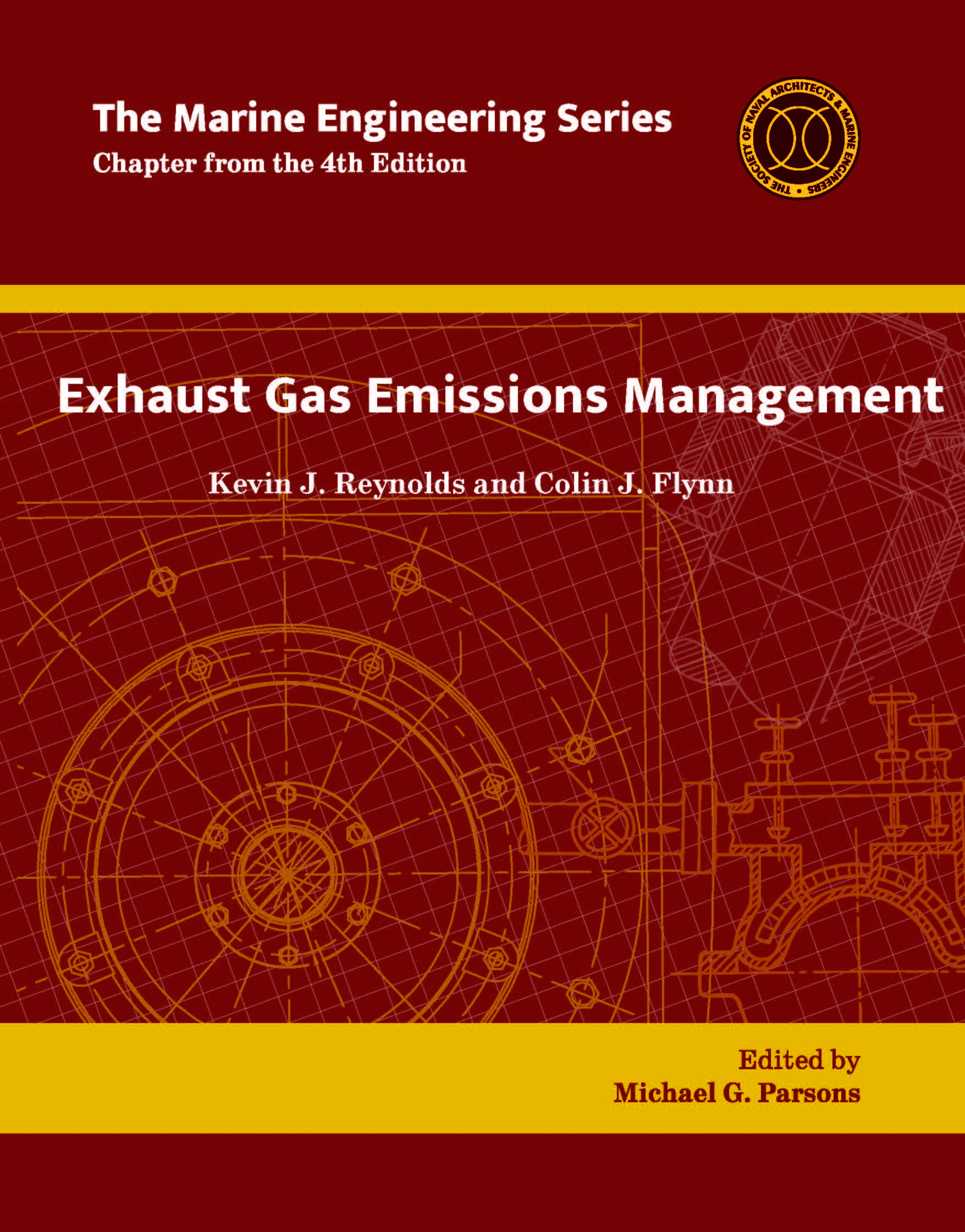
Exhaust Gas Emissions Management
Kevin J. Reynolds and Colin J. Flynn
This is a completely new chapter that deals with the harmful emissions from marine engines, International and Domestic limitations and requirements, and the strategies, processes, and equipment utilized to respond to these demands. This area is of the utmost importance and a major challenge for marine engineers as the maritime industry seeks to decarbonize in the coming decades. Kevin Reynolds and Colin Flynn of Glosten, Inc., Seattle, WA provide a comprehensive presentation of these requirements and responses. This chapter is part of an excellent three-part series of chapters dealing with decarbonization and future fuels: “Greenhouse Gases and a Low Carbon Future” by Suárez de la Fuente, Baresic, and Smith; this “Exhaust Gas Emissions Management” chapter; and “Marine Fuels, Storage and Treatment” to appear later by Thomas McKenney.
ISBN 979-8-3507-3003-6
Soft Cover ♦ 1 lb
List: $45.00
Members: $35.00
Student Members: $25.00
MARINE ENGINEERING, 1992 edition
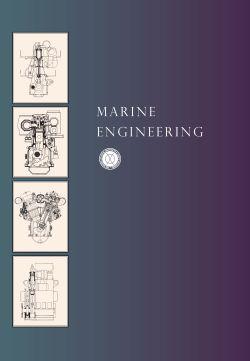
ISBN 0-939773-10-4
968 pages ♦ Hard Cover ♦ 5 lbs
List Price: $220.00
Member Price: $180.00
Student Member Price: $110.00
Marine Engineering
edited by Roy L. Harrington (1992)
This edition of Marine Engineering presents more than twenty years of evolutionary changes in the maritime industry. The book provides a complete review of marine engineering, encompassing both naval and merchant practices and incorporating the broad range of technological developments that evolved during the last decades. Also included is material presenting the principles associated with pollution control, design for production, integrated logistic support and noise control, as well as expanded coverage of propulsion shafting and piping. Long-time SNAME member Roy L. Harrington, now retired from Newport News Shipbuilding, edited this landmark volume.
THE MARINE ENGINEERING SERIES (2020)
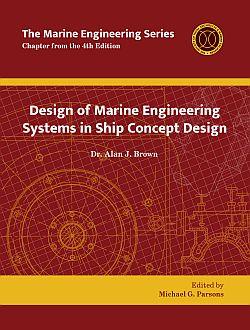
ISBN 978-1-7923-0964
Soft Cover ♦ 1 lb
List: $45.00
Members: $35.00
Student Members: $25.00
Design of Marine Engineering Systems in Ship Concept Design
by Alan Brown
Prof. Brown presents a rigorous approach to the integrated conceptual design of distributed mechanical, electrical and fluid marine engineering systems during the conceptual design of complex warships. The interdependence and complexity of ship systems is growing at such a rate that a total system-of-systems design approach is now essential. At each stage of design, the total ship system must be resolved at a level of detail sufficient to make decisions necessary to move to later design stages without costly backtracking. The modeling uses a network representation and linear programming to optimize the architecture and sizing of these systems considering normal operating, casualty and damage situations. The approach would be equally applicable to the integrated conceptual design and optimization of other complex offshore projects and vessels. This development was largely the result of a Navy sponsored cooperative program at Virginia Tech, the University of Michigan, Delft Technical University of Technology (DUT) and University College London (UCL) with collaboration from MIT and the Naval Surface Warfare Center. This new chapter would be an excellent starting point for teaching the overall design of marine engineering installations in an advanced undergraduate or graduate marine design course.
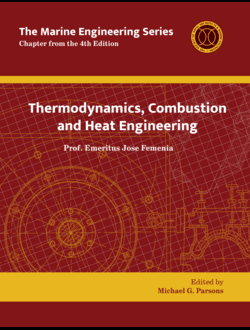
ISBN 978-1-7923-0959-5
Soft Cover ♦ 1 lb
List: $45.00
Members: $35.00
Student Members: $25.00
Thermodynamics, Combustion and Heat Engineering
by Prof. Emeritus Femenia
Prof. Emeritus Femenia presents an updated and modified coverage chapter that introduces the thermodynamics, combustion, heat transfer and heat engineering associated with marine power cycles and steam plant heat balances. This is based on a long career of teaching, consulting and research related to both marine and land-based power plants. Following a review of thermodynamic principles, the fundamentals of combustion and heat transfer are introduced. Ideal power cycles are presented including regenerative and reheat vapor cycles. The thermodynamics and heat transfer associated with marine boilers are then briefly presented. The external thermodynamics of marine steam turbines and the estimation of state lines are discussed. This sets the stage for the introduction to the thermodynamics and heat balances of marine regenerative and reheat steam plants. The chapter closes with a discussion of waste heat recovery and gas turbine and steam combined cycles. This chapter provides excellent text material for marine applied thermodynamics and heat engineering. It would also provide a valuable review for marine engineering PE license study.
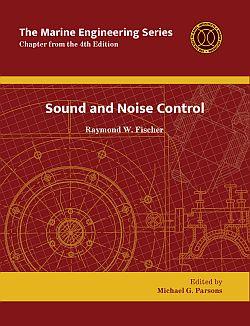
ISBN 978-1-7923-0962-5
Soft Cover ♦ 1 lb
List: $45.00
Members: $35.00
Student Members: $25.00
Sound and Noise Control
by Raymond W. Fischer
Ray Fischer’s chapter on Sound and Noise Control is based upon a long career involved with marine noise control including design, field work and analysis methods development. The Editor’s chapter is a teaching and reference chapter on marine machinery vibration with a primary emphasis on propulsion shafting systems. It is based upon the development and teaching of a graduate course on marine machinery vibrations.

ISBN 978-1-7923-1226-7
Soft Cover ♦ 1 lb
List: $45.00
Members: $35.00
Student Members: $25.00
Integrated Electric Propulsion
by Norbert Doerry
Norbert Doerry’s chapter addresses medium voltage alternative current and direct current integrated systems. Professors Sun and Patel and Dr. Hou address fuel cells, solar cells and energy storage devices (batteries, ultra-capacitors. flywheels) available and evolving for use in hybrid applications. The final chapter addresses the lower voltage, ship service function distribution system design and development.
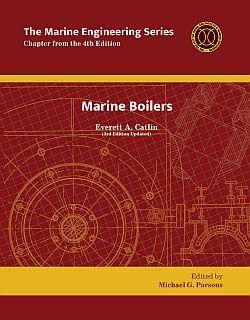
ISBN 978-1-7923-0961-8
Soft Cover ♦ 1 lb
List: $45.00
Members: $35.00
Student Members: $25.00
Marine Boilers
Everett A. Catlin (3rd Edition, Updated)
From the dawn of the Industrial Revolution the attention of many individuals focused on the advantages of powering ships by steam. A study of the history of early marine boilers reveals that early designers and engineers did not lack novel and ingenious ideas for steam propulsion equipment. However, they did lack the materials and machine tools with which to implement these ideas. Dependable boilers were sorely needed in the development of the steamboat.
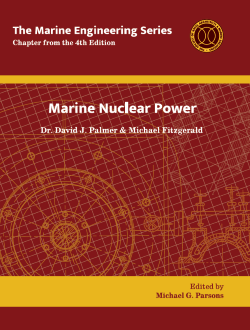
ISBN 978-1-7923-0960-1
Soft Cover ♦ 1 lb
List: $45.00
Members: $35.00
Student Members: $25.00
Marine Nuclear Power
David J. Palmer & Michael Fitzgerald
The purpose of this chapter is to present a survey of the application of nuclear energy to marine propulsion. With the continued push to comply with ever increasing airborne emission reduction control laws, nuclear power is a viable option as it does not produce greenhouse gases or air pollution such as NOx, SOx, CO and CO2. This chapter is directed toward people having an engineering background but no experience regarding nuclear reactors. Fundamental atomic theory and nuclear reactor theory are described with an overview of former, current and possible advanced nuclear reactor options to propel and power future merchant marine and naval vessels.

ISBN 978-1-7923-1227-4
Soft Cover ♦ 1 lb
List: $45.00
Members: $35.00
Student Members: $25.00
Greenhouse Gases and a Low Carbon Future
Dr. Santiago Suárez de la Fuente & Dr. Domagoj Baresic
In this edition, there are two chapters that address the science/policy background of the major environmental issues that affect the marine industry today: Greenhouse Gases and a Low Carbon Future, by Dr. Santiago Suárez de la Fuente, Dr. Domagoj Baresic and Prof. Tristan Smith, Energy Institute, University College London Biology of Marine Invasions and Biofouling, by Marcie Merksamer, Enviro Management Inc., Arroyo Grande, CA and John A. Lewis, ESLink Services, Castlemaine, Victoria, Australia.
The goal of these two chapters is to give marine engineers the background and foundation to better understand the issues and work effectively with other professionals who are involved in the development and response to the major environmental issues that will affect marine engineering in the years ahead. The authors of the GHG chapter have had lead roles in the key proposals placed before the IMO to establish the path forward. The latter chapter is the result of the cooperation of IMarEST in this new edition, which is greatly appreciated.
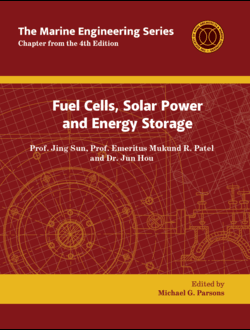
ISBN 978-1-7923-1231-1
Soft Cover ♦ 1 lb
List: $45.00
Members: $35.00
Student Members: $25.00
Fuel Cells, Solar Power and Energy Storage
Prof. Jing Sun, Prof. Emeritus Mukund R. Patel and Dr. Jun Hou
In this edition, the electrical area will be treated in three chapters:
Integrated Electrical Propulsion, by Dr. Norbert Doerry, Capt. USN (Ret.), NAVSEA Fuel Cells, Solar Power and Energy Storage, by Prof. Jing Sun, University of Michigan; Prof. Mukund Patel, USMMA and Dr. Jun Hou, Apple Corp. Electrical Distribution Systems, by William Ayers, Chief Electrical Engineer/Technical Manager, Elliott Bay Design Group.
Each of these outstanding authors is an electrical engineering graduate and a member of IEEE as well as SNAME. They all have extensive experience in the application of power and control to marine and other transportation applications. Collectively they provide an excellent introduction to and coverage of the modern use of electrical power in marine applications. Norbert Doerry’s chapter addresses medium voltage alternating current and direct current integrated systems. Professors Sun and Patel and Dr. Hou address fuel cells, solar cells and energy storage devices (batteries, ultra-capacitors. flywheels) available and evolving for use in hybrid applications. The final chapter addresses the lower voltage, ship service distribution system design and development as well as hybrid systems
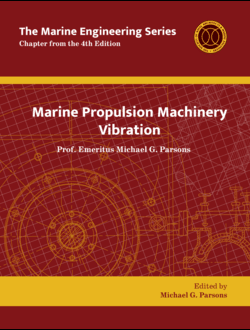
ISBN 978-1-7923-1232-8
Soft Cover ♦ 1 lb
List: $45.00
Members: $35.00
Student Members: $25.00
Marine Propulsion Machinery Vibration
Michael G. Parsons
In this edition, the noise, vibration and shafting areas are treated in three coordinated chapters:
- Marine Propulsion Shafting Vibration, by Prof. Emeritus Michael G Parsons, University of Michigan
- Sound and Noise Control, by Raymond W. Fischer, Senior Consultant, Noise Control Engineering
- Shafting, Bearings and Lubrication, by Kevin Prince, Vice Pres. of the Eng. Group, Gibbs and Cox
Each of these authors has extensive experience in their respective area and long involvement with SNAME. Collectively, they provide an excellent introduction to and coverage of noise control, propulsion shafting systems and marine machinery vibration. The Editor’s chapter is a teaching and reference chapter on marine machinery vibration with a primary emphasis on propulsion shafting systems. Ray Fischer’s chapter on Sound and Noise Control is based upon a career involved in shipboard noise control. Kevin Prince’s chapter builds on two chapters in the previous edition and covers the overall design of marine shafting systems including their bearings and associated lubrication.
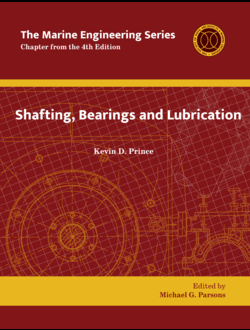
ISBN 979-8-3507-0674-1
Soft Cover ♦ 1 lb
List: $45.00
Members: $35.00
Student Members: $25.00
Shafting, Bearings and Lubrication
Kevin D. Prince
This chapter focuses on the design of the propulsion shafting, the shaft bearings and their lubrication. The propeller hydrodynamic design and the design of reduction gears are presented in other chapters and are not repeated here. Although the fundamentals outlined in the following sections apply to all types of prime movers and propulsors, the discussion is for a propulsion plant using a fixed-pitch propeller and a geared diesel prime mover in order to avoid being unduly confusing in the discussion. However, considerations are discussed where the selection of a prime mover has an influence on the shafting design.
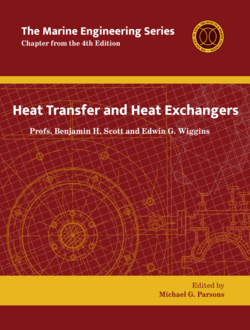
ISBN 979-8-3507-0675-8
Soft Cover ♦ 1 lb
List: $45.00
Members: $35.00
Student Members: $25.00
Heat Transfer and Heat Exchangers
Profs. Benjamin H. Scott and Edwin G. Wiggins
Heat exchangers are used to transfer heat from a hotter fluid (liquid or gas) to a colder fluid (liquid or gas). This broad definition encompasses a wide array of equipment, including boilers, condensers, distilling plants, and ventilation cooling coils, which are given detailed coverage in other chapters. Consequently, this chapter if focused upon the many other types of shell-and-tube, plate, and compact heat exchangers that are used aboard ships and includes an assessment of thermal design, mechanical design, and design-for-manufacture considerations.

ISBN 979-8-3507-0676-5
Soft Cover ♦ 1 lb
List: $45.00
Members: $35.00
Student Members: $25.00
Pumps, Compressors, Blowers, and Ejectors
Dr. William J. Sembler
The chapter Pumps, Compressors, Blowers and Ejectors addresses the design and systems implementation issues associated with these components. This chapter is one of only two where the original author was available to update and extend their original 3rd Edition chapter. Dr. Bill Sembler has produced a comprehensive chapter based upon his long career in marine engineering and pump engineering. The Society is pleased to be able to include his work again.
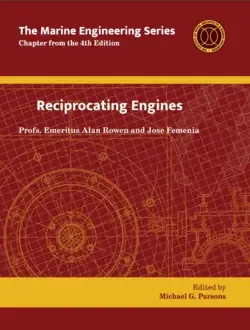
ISBN 979-8-3507-0679-6
Soft Cover ♦ 1 lb
List: $45.00
Members: $35.00
Student Members: $25.00
Reciprocating Engines
Profs. Emeritus Alan Rowen and Jose Femenia
This chapter is an update of the Diesel Engines chapter authored by Prof. Alan Rowen for the Third Edition of Marine Engineering. Due to his health, however, Prof. Rowen was not able to participate in this revision that updates and extends the chapter to include other fuels and, thus, evolve into a chapter on Reciprocating Engines. Prof. Emeritus Jose Femenia took the leadership of this new chapter; the chapter is dedicated to Prof. Rowen who passed away in October 2019.


